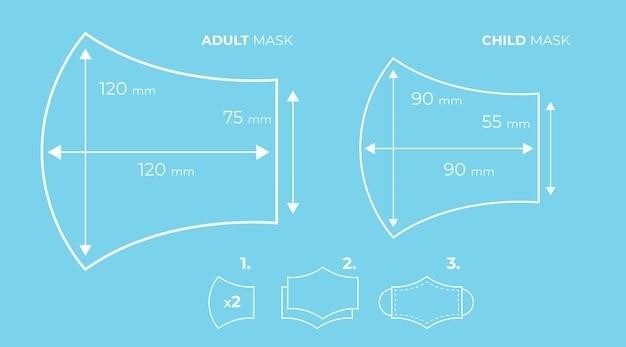Tarsal Tunnel Syndrome Exercises
One of the best ways to get relief from Tarsal Tunnel Syndrome is through exercises that give your ankle stability and strength. These aren’t just temporary fixes‚ but rather help to strengthen the muscles around the ankle and improve flexibility. These exercises can be found in several online resources‚ including PDFs. Some popular PDF resources include “Tarsal Tunnel Syndrome Exercises Handout” and “Tarsal Tunnel Syndrome Exercises.” These PDFs often feature exercises like calf stretches‚ ankle mobility exercises‚ and foot strengthening exercises. These resources also may include nerve glides and home remedies for additional relief.
Introduction
Tarsal tunnel syndrome is a condition that occurs when the tibial nerve‚ which runs along the inside of the ankle‚ becomes compressed. This compression can cause pain‚ numbness‚ tingling‚ and weakness in the foot and ankle. While there are various treatment options for tarsal tunnel syndrome‚ including medication and surgery‚ exercises play a crucial role in managing symptoms and promoting long-term relief. These exercises focus on improving ankle stability and strength‚ stretching the calf muscles‚ and promoting nerve gliding. A comprehensive exercise program can be found in many online resources‚ often in the form of PDFs. These PDFs provide detailed instructions‚ illustrations‚ and progressions for various exercises‚ making it easier for individuals to perform them safely and effectively at home.
Causes of Tarsal Tunnel Syndrome
Tarsal tunnel syndrome arises from compression of the tibial nerve as it passes through the tarsal tunnel‚ a narrow passageway on the inside of the ankle. This compression can be caused by a variety of factors‚ including⁚
- Swelling⁚ Conditions like arthritis‚ tendinitis‚ or ankle sprains can lead to swelling in the area‚ putting pressure on the nerve.
- Cysts⁚ Fluid-filled sacs called ganglia can form near the nerve‚ causing compression.
- Anatomical variations⁚ Some individuals may have a smaller tarsal tunnel or a nerve that is more susceptible to compression.
- Trauma⁚ Ankle injuries or surgery can damage the nerve or surrounding tissues‚ leading to compression.
- Overpronation⁚ Excessive inward rolling of the foot‚ known as overpronation‚ can put stress on the tibial nerve.
Understanding the causes of tarsal tunnel syndrome is crucial for addressing the underlying issues and developing an effective treatment plan that includes exercise.
Symptoms of Tarsal Tunnel Syndrome
The symptoms of tarsal tunnel syndrome can vary depending on the severity of the nerve compression. Common symptoms include⁚
- Pain⁚ Aching‚ burning‚ or shooting pain in the ankle‚ heel‚ or arch of the foot‚ which may radiate up the leg.
- Numbness⁚ Loss of sensation in the sole of the foot‚ toes‚ or even part of the calf.
- Tingling⁚ Pins and needles sensation in the affected area.
- Weakness⁚ Difficulty flexing the toes or walking on your tiptoes.
- Burning⁚ A burning or searing sensation in the affected area.
- Foot Drop⁚ In severe cases‚ the foot may droop or drag due to muscle weakness.
These symptoms may worsen at night or after prolonged standing or walking. It’s important to note that these symptoms can also be associated with other conditions‚ so it’s crucial to consult a doctor for a proper diagnosis.
Diagnosis of Tarsal Tunnel Syndrome
Diagnosing tarsal tunnel syndrome typically involves a combination of a physical exam‚ medical history‚ and imaging tests. A physical exam will include assessing your symptoms‚ examining your ankle and foot‚ and testing your nerve function. Your doctor will ask about your medical history‚ including any past injuries or conditions that might contribute to nerve compression.
Imaging tests can help confirm the diagnosis and rule out other conditions. These tests may include⁚
- X-ray⁚ To rule out bone spurs or other abnormalities that might be compressing the nerve.
- MRI⁚ To provide detailed images of the soft tissues‚ including the nerve and surrounding structures.
- Ultrasound⁚ To visualize the nerve and identify any swelling or compression.
Electrodiagnostic studies‚ such as nerve conduction studies and electromyography‚ may also be used to assess the nerve’s function and confirm the diagnosis.
Conservative Treatment Options
The initial approach to managing tarsal tunnel syndrome is often conservative‚ focusing on relieving symptoms and reducing pressure on the tibial nerve. These treatment options may include⁚
- Rest⁚ Avoiding activities that worsen your symptoms is crucial.
- Ice⁚ Applying ice packs to the affected area for 15-20 minutes at a time‚ several times a day‚ can help reduce inflammation and pain.
- Compression⁚ Wearing a compression bandage or sock can help reduce swelling.
- Elevation⁚ Elevating your foot above your heart can also help reduce swelling.
- Over-the-counter pain relievers⁚ Nonsteroidal anti-inflammatory drugs (NSAIDs) like ibuprofen or naproxen can help alleviate pain and inflammation.
- Physical therapy⁚ A physical therapist can teach you exercises to improve ankle mobility‚ strength‚ and flexibility‚ which can help reduce pressure on the nerve.
- Orthotics⁚ Custom-made orthotics can help support your foot and ankle and reduce pressure on the nerve.
- Corticosteroid injections⁚ In some cases‚ your doctor may inject corticosteroids into the tarsal tunnel to reduce inflammation and provide pain relief.
If conservative treatment is not effective‚ your doctor may recommend surgery to release the pressure on the tibial nerve.
Exercises for Tarsal Tunnel Syndrome
Exercises play a vital role in managing tarsal tunnel syndrome‚ aiming to improve flexibility‚ strength‚ and nerve gliding. These exercises can be found in various resources‚ including PDFs‚ and are often recommended by physical therapists. Here’s a breakdown of common exercise types⁚
- Calf Stretches⁚ Tight calf muscles can contribute to tarsal tunnel syndrome by putting pressure on the tibial nerve. Stretching the calf muscles helps relieve tension and improve nerve function. Examples include standing calf stretch‚ seated calf stretch‚ and towel calf stretch.
- Ankle Mobility Exercises⁚ Improving ankle mobility helps ensure proper nerve gliding and reduces pressure on the tibial nerve. These exercises involve moving the ankle in different directions‚ such as ankle circles‚ ankle flexion and extension‚ and ankle inversions and eversions.
- Foot Strengthening Exercises⁚ Strengthening the muscles of the foot and ankle helps provide better support and reduce strain on the tibial nerve. Examples include toe curls‚ marble pickups‚ and calf raises.
These exercises should be performed regularly and gradually increased in intensity as tolerated.
Calf Stretches
Calf stretches are a crucial component of tarsal tunnel syndrome exercises‚ as tight calf muscles can exacerbate nerve compression. These stretches aim to lengthen the calf muscles‚ reducing tension on the tibial nerve. Several calf stretches are commonly recommended‚ and many are detailed in online PDFs dedicated to tarsal tunnel syndrome exercises.
- Standing Calf Stretch⁚ This stretch involves standing with your feet hip-width apart‚ placing one foot slightly behind the other‚ and bending the front knee while keeping the back leg straight. Hold this position for 30 seconds‚ then repeat on the other side.
- Seated Calf Stretch⁚ This stretch is performed by sitting on the floor with your legs extended. Loop a towel around the toes of one foot and pull it towards you‚ keeping your knee straight. Hold for 30 seconds‚ then repeat on the other side.
- Towel Calf Stretch⁚ This stretch involves standing with your feet hip-width apart‚ placing a towel under the ball of your foot. Pull the towel towards you‚ keeping your knee straight. Hold for 30 seconds‚ then repeat on the other side.
These stretches should be performed regularly‚ ensuring gentle and controlled movements to avoid further injury.
Ankle Mobility Exercises
Ankle mobility exercises are essential for tarsal tunnel syndrome‚ as they promote flexibility and range of motion in the ankle joint‚ which can alleviate pressure on the tibial nerve. These exercises are often included in online PDFs dedicated to tarsal tunnel syndrome treatment‚ providing step-by-step instructions and visual aids.
- Ankle Circles⁚ Sit comfortably with your legs extended. Slowly move your ankle in a clockwise and counterclockwise circle‚ performing 10 repetitions in each direction.
- Dorsiflexion and Plantarflexion⁚ Sit or stand with your feet flat on the floor. Point your toes upwards (dorsiflexion) and hold for a few seconds. Then‚ point your toes downwards (plantarflexion) and hold. Repeat 10-15 times.
- Ankle Inversions and Eversions⁚ Sit with your legs extended and feet flat on the floor. Slowly turn your foot inwards (inversion) and then outwards (eversion)‚ holding each position for a few seconds. Repeat 10-15 times.
These exercises can be performed daily‚ focusing on controlled movements and avoiding pain. Regular practice can help improve ankle mobility and reduce nerve compression‚ providing relief from tarsal tunnel syndrome symptoms.
Foot Strengthening Exercises
Foot strengthening exercises are crucial for alleviating tarsal tunnel syndrome‚ as they enhance the muscles that support the ankle and foot‚ helping to reduce pressure on the tibial nerve. Numerous online resources‚ including dedicated PDFs‚ offer detailed guidance on these exercises‚ making them accessible for home practice.
- Toe Curls⁚ Sit with your feet flat on the floor. Curl your toes upwards‚ as if you’re trying to pick up a small object‚ and hold for a few seconds. Repeat 10-15 times.
- Marble Pickup⁚ Place several marbles on the floor. Use your toes to pick up each marble and drop it into a container. Repeat with 10-15 marbles.
- Towel Scrunches⁚ Sit with your feet flat on the floor. Place a small towel on the floor in front of your feet. Use your toes to scrunch the towel towards you‚ holding for a few seconds. Repeat 10-15 times.
- Calf Raises⁚ Stand with your feet shoulder-width apart. Slowly raise up onto your toes‚ squeezing your calf muscles. Hold for a few seconds‚ then lower back down. Repeat 10-15 times.
These exercises can be incorporated into daily routines‚ gradually increasing the repetitions and intensity as strength improves. Remember to focus on proper form and avoid overexertion‚ as pain should be a sign to stop and adjust the exercise.
Nerve Glides
Nerve glides are a series of gentle movements designed to improve the mobility of the tibial nerve‚ which is often compressed in tarsal tunnel syndrome. These exercises can help to reduce pain and improve nerve function by promoting better blood flow and reducing tension in the nerve. Numerous online resources‚ including PDFs‚ offer step-by-step instructions on performing nerve glides‚ making them accessible for home practice.
- Tibial Nerve Glide⁚ Sit with your leg extended. Gently bend your knee and pull your toes towards your shin. Hold this position for a few seconds‚ then slowly extend your leg back out. Repeat 10-15 times.
- Ankle Flexion⁚ Sit with your leg extended. Point your toes upwards and hold for a few seconds. Then‚ point your toes downwards and hold for a few seconds. Repeat 10-15 times.
- Ankle Inversion⁚ Sit with your leg extended. Turn your foot inward‚ as if you’re trying to touch your big toe to your shin. Hold for a few seconds‚ then turn your foot outward; Repeat 10-15 times.
- Ankle Eversion⁚ Sit with your leg extended. Turn your foot outward‚ as if you’re trying to touch your pinky toe to your shin. Hold for a few seconds‚ then turn your foot inward. Repeat 10-15 times.
It’s essential to perform these exercises slowly and gently‚ listening to your body and avoiding any sharp pain. Consult with a physical therapist or qualified healthcare professional for personalized guidance and modifications based on your individual needs.
Home Remedies
While exercises and nerve glides are crucial for managing tarsal tunnel syndrome‚ home remedies can provide additional relief and support. Many PDFs available online offer guidance on these remedies‚ emphasizing their effectiveness in reducing symptoms. Here are some common home remedies that you can find in those resources⁚
- Elevation⁚ Elevate your foot above your heart for 15-20 minutes several times a day. This can help to reduce swelling and improve circulation.
- Ice⁚ Apply ice packs to the affected area for 15-20 minutes at a time‚ several times a day. This can help to reduce inflammation and pain.
- Over-the-counter pain relievers⁚ Nonsteroidal anti-inflammatory drugs (NSAIDs) like ibuprofen or naproxen can help to reduce pain and inflammation.
- Compression⁚ Wearing a compression sock or bandage can help to reduce swelling and support the ankle.
- Avoid tight shoes⁚ Wearing shoes that are too tight or have high heels can put pressure on the tibial nerve. Opt for comfortable‚ supportive footwear.
- Avoid prolonged standing or sitting⁚ If you must stand or sit for extended periods‚ take frequent breaks to move around and stretch your ankles.
These home remedies can be incorporated into your daily routine alongside exercises and nerve glides to improve your overall well-being and manage tarsal tunnel syndrome effectively. Always consult with a healthcare professional before starting any new treatment‚ including home remedies.
When to See a Doctor
While home remedies and exercises can provide relief for tarsal tunnel syndrome‚ it’s important to understand when seeking professional medical attention is crucial. Many PDFs on tarsal tunnel syndrome exercises advise seeking a doctor’s consultation if symptoms worsen or persist despite trying conservative measures. Here are some warning signs that necessitate a doctor’s visit⁚
- Increased pain or numbness⁚ If your pain or numbness intensifies‚ especially if it spreads to your toes or foot‚ it’s time to see a doctor.

- Weakness in your foot or ankle⁚ If you notice difficulty with walking or balance due to weakness in your foot or ankle‚ seek medical attention.
- Symptoms that worsen at night⁚ If your symptoms become more severe at night‚ despite using home remedies‚ it’s a sign that the condition might be more serious.
- Symptoms that don’t improve with home care⁚ If your symptoms persist despite trying home remedies and exercises for several weeks‚ it’s essential to consult a doctor.
- Redness‚ swelling‚ or warmth in your ankle⁚ These signs might indicate an infection or other underlying condition requiring medical attention.
Seeking professional medical advice can help identify the underlying cause of your symptoms and determine the most appropriate treatment plan‚ potentially including medications‚ injections‚ or surgery.
Tarsal tunnel syndrome can be a painful and debilitating condition‚ but many online resources‚ including PDFs‚ offer valuable information and exercises to help manage symptoms. Engaging in a regular exercise routine that includes calf stretches‚ ankle mobility exercises‚ and foot strengthening exercises can significantly improve flexibility and strength‚ alleviating pressure on the tibial nerve. While these exercises can provide relief‚ it’s crucial to consult a doctor if symptoms worsen or persist. A doctor can help determine the underlying cause of your symptoms and recommend the most appropriate treatment plan. Remember‚ consistency and patience are key to effectively managing tarsal tunnel syndrome. By incorporating these exercises into your routine and seeking professional medical attention when needed‚ you can work towards a more comfortable and pain-free life.


















